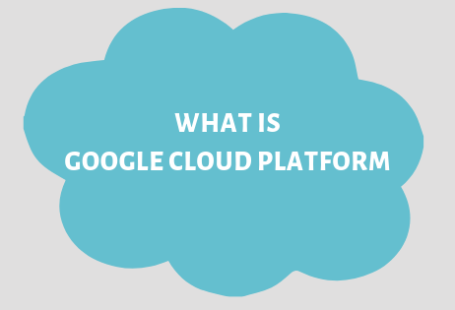These days, the world runs on data. Technology continues to evolve, and it allows businesses to acquire more figures and statistics. It has opened a new way of how companies and organizations store these acquired information through cloud computing. Experts regard cloud computing as one of the technological advances that are most beneficial to many industries that want to achieve efficient usage of energy as it relies on the internet and off-premise data centers.
In the context of cloud computing, its purposes are to aid businesses and organizations worldwide to experience the advantages of scale, cost-efficiency, security, and innovation it can provide. With its listed benefits, many business owners and enterprises are encouraged to lean on cloud computing. Experts expect that cloud data centers will process about 91% of companies’ workloads around the world by the year 2021. It is also predicted that the cloud computing industry will reach its peak of $623.3 billion by 2023.
With these growing numbers, cloud computing is the future of storing data with ease, security, and convenience. As the years pass on, many have taken notes on how cloud computing pose different environmental benefits. This innovation has led to a movement called green cloud computing in the information technology (IT) landscape.
Green Cloud Computing Definition
Green cloud computing is a coined term that means making the practices and approaches of using technological advances like computing and other IT resources sustainable for potential environmental benefits.
The growing number of companies around the world makes a significant impact on the environment. This growth means for a great need to use data centers, an increase in the daily commute of workers, and an influx of office materials and supplies needed on a daily bases. Green cloud computing answers these looming environment issues by providing options that can lower emitted carbon footprints around the world.
Many companies are now leaning on the cloud services as such many technological applications and practices that can reduce environmental impacts are being developed daily. Green cloud computing makes it possible to maintain and enhance business operations and processes while looking after the environment.
Impacts of Green Cloud Computing To The Environment
- Fewer Carbon Footprints Because Of Remote Workers
Cloud computing allows businesses to store their data on the internet, which means it can be accessed by anyone given the authority, no matter the location or whatever device is being used. This opportunity presented businesses and companies the flexibility to gear their employees toward remote working. As you practice this business trend, you start a substantial environmental help.
Working remotely gives your workers the benefit of escaping the daily commute, which requires them to fuel their cars regularly. With the chance to allow your personnel to work at home or any place that would better suit their efficiency and productivity, you also help the environment by cutting down on fuel emissions.
Even though you have many employees still working for you, you do not have to acquire a big space with your office. You can get a small office space which reduces your consumption of water and electricity.
- Saving The Environment By Being Paperless
Gone are the days where you have to print and store all files received in your email or all of the reports you have prepared for your immediate head. With the innovative features of storing data in the cloud, you do not need large filing cabinets to store your printed copies. Green cloud computing makes it possible for companies and organizations to go paperless.
As long as you are connected on the internet, you can leverage cloud storage options like Google Drive, OneDrive, Dropbox, or SharePoint. These storage options allow you and your whole team to go paperless without sacrificing the entire organization’s functionality. With the ease of use, as these cloud storage options offer drag and drop features for all your files, you can still expect productivity within the whole team or organization even when working remotely.
With the emergence of Adobe Sign or DocuSign, there is no need to print any file for a single signature. These cloud-based technology innovations will allow you to download any document, fix your signature and send it back to whoever needs it without printing any pages and with just the use of your computer.
The use of these green cloud computing tools makes it possible for organizations in different industries to reduce paper product consumption, if not eliminating it. This approach creates a significant impact on the environment as you cut down the need to regularly purchase paper products, shred your documents, or dispose of your files.
- Reduction Of Your Power Consumption To Decrease Energy Use
Reduction of your company’s power consumption does not only mean turning off your computer or your workstation lights when not in use. Though this can make a huge difference, you have to understand the gravity of consumed power when your company runs on-location servers.
After you have logged out, shut down your desktop and make your way home, these on-premise servers need to have a constant power supply to make your servers work. You also need to have a running cooling system 24/7 to avoid your servers from overheating, and disposing of these machines after its shelf life will be even another thing you need to tackle.
Switching to the cloud can reduce your reliant on these on-premise servers. It means that you also need fewer machines in your office location, thus less space, and cooling requirements, leading to a reduced power consumption rate. Savings from these freed up capital expenditures can be allocated to other environment-friendly projects or business development ventures like enhancing your marketing strategy campaigns.
- Dematerialization That Decreases Greenhouse Gases Emissions
When you opt to have an on-site data center, the materials used to build it goes a long way and produces greenhouse gasses (GHG) on its life cycles. This GHG are emitted as raw materials for your equipment is being produced. The same gases are emitted as the equipment is being assembled and transported to its location. As you use the equipment, more gasses are produced as well as you come in terms of terms.
As you move to the cloud means, you decrease the emission of these gases, and you practice dematerialization. Dematerialization means the replacement of physical products with virtual alternatives. As you begin to rely on cloud services, you shy away from using GHG emitting physical products, which has a significant impact on the well-being of the environment.
Reducing your leverage on physical products like paper, pieces of machinery, equipment, and hardware also decreases the amount of waste garnered when these products call the need for disposal. Green cloud computing even allows you to focus your time and effort on other profitable projects than dealing with mundane tasks like IT works and downtime issues.
Final Thoughts
The benefits provided by cloud computing technology has now gone a long way. Aside from offering you convenience, flexibility, scalability, and cost efficiencies, it has become a way to innovate processes and operations that would not add to the looming and growing environmental issues worldwide.
Many have regarded as technology advances to be a driving force for environmental destruction. However, technologies like cloud computing can be a start to make up and help address environmental concerns. Relying on green cloud computing can make your company reach a positive bottom line, enhance workforce productivity or innovate business processes, and make the environment a better place.






